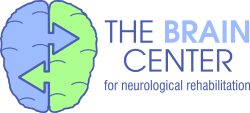Neurofeedback for ADD/ADHD
When a child learns how to do something for the first time it can be frustrating for them at times. Like when they learn how to ride a bicycle or learn how to play the guitar or piano. But once they start putting all the steps together, it becomes like second nature and hard to forget. The same is true when children with ADD/ADHD learn how to harness their brain activity and allow it to work to their advantage via neurofeedback- it’s hard for them to revert back to their old ways. Laws of nature always strive to work as efficiently possible. When brain pathways perform improperly or inefficiently, it does what it can with whatever resources it has, as quickly as it can, to restore function. If too many areas of the brain have been robbed of its resources (i.e. – lack of blood flow, lack of oxygen, not enough fuel ‘glucose’) then it does the best it can.
Neurofeedback is a technique that involves one to wear a series of sensors on the scalp to gather information. This information is sent to a computer, which determines how the brain is functioning in real time. This information is sent to the computer really fast – in fact faster than it takes one to think. Various changes in brainwaves happen in each area of the brain all the time. By monitoring these changes, which are unique to each individual, we are able to see why a particular person with ADD/ADHD is having a hard time concentrating. After learning which areas of the brain are asymmetrical, not communicating properly and which regions are talking too fast or too slow, we can develop a protocol. This unique protocol, that we program into the computer, will allow us to see when the person is paying attention and able to sit still. When this happens – the computer sends out a reward. The computer can be set up to have the person play a video game, watch a movie, or basically just hear various sounds. When a person is concentrating intently on the video game then they actually do better and win. When they are watching a movie, they can make the movie go in regular speed and have good sound quality when they are paying attention, but when they drift off the movie will turn off or slow down. The same goes with various sounds that will ring when the person is concentrating properly. The more sounds that are heard the better the person is learning.
The more attentive the child is during their neurofeedback session, the more reward activity happens on the video screen. When their mind wanders – like when they “space out” in class – the less reward sounds or the action on the video screen just stops completely. With neurofeedback training, the child is actually being taught how to use the nerve pathways that control attention and mental processing. The more these children use these pathways, they learn how to make these connections on their own. After performing these neurofeedback brain exercises over a period of time, the pathways involved in attention and learning are reawakened and start working efficiently. The idea behind neurofeedback is to help children with ADD/ADHD learn how to make their brain be attentive when it needs to be.
